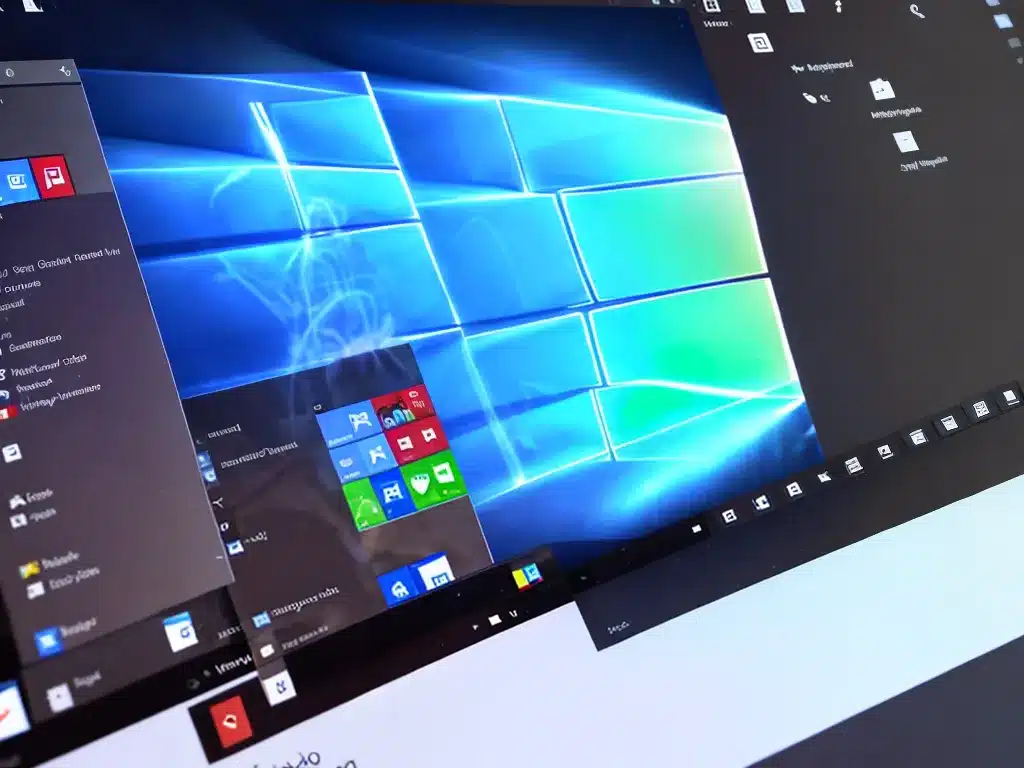
Introduction
The new Windows 11 operating system introduces a redesigned Start menu that provides quick access to frequently used apps and files. Enabling the new Start menu allows you to take advantage of the updated interface and features. In this guide, I will walk you through the steps to enable the new Start menu in Windows 11.
Prerequisites
Before you can enable the new Start menu, you need to make sure your device meets the minimum system requirements for Windows 11. These include:
- A compatible 64-bit processor (1 GHz or faster with 2 or more cores)
- 4 GB RAM
- 64 GB storage space
- UEFI secure boot
- TPM 2.0
- Graphics card compatible with DirectX 12 or later
- A high-resolution display (720p or greater)
- An internet connection and Microsoft account
You also need to have Windows 11 installed. The new Start menu is enabled by default when you upgrade from Windows 10 to Windows 11.
How to Enable the New Start Menu
Via Settings
The easiest way to enable the new Start menu is through the Settings app:
- Open Settings > Personalization > Taskbar
- Under the “Taskbar behaviors” section, toggle Use new taskbar on startup to On
- Restart your PC
After restarting, you will see the new centered Start menu with pinned apps and Recommended items.
Via Registry Editor
You can also enable the new Start menu by editing the Registry:
- Open Registry Editor
- Navigate to
HKEY_CURRENT_USER\Software\Microsoft\Windows\CurrentVersion\Explorer\Advanced - Add a new DWORD (32-bit) value named **TaskbarAl`
- Set its value data to
1 - Restart your PC
This will force enable the new Windows 11 Start menu.
Via Group Policy
For enterprise environments, the new Start menu can be enabled via Group Policy:
- Open the Group Policy Editor
- Navigate to
Computer Configuration > Administrative Templates > Windows Components > File Explorer - Enable the policy Use new taskbar on startup
- Click Apply and restart devices
The new Start menu will now be enabled across your network.
Customizing the New Start Menu
Once enabled, you can customize the new Start menu to suit your preferences:
- Resize the Start menu by dragging the edges
- Unpin apps you don’t use frequently
- Rearrange pinned apps by dragging and dropping
- Remove the Recommended section
- Add folders, apps, and files to the Start menu
Take time to personalize the layout, sizing, and contents to optimize your workflow.
Troubleshooting Issues
If you are unable to enable or customize the new Start menu, try the following troubleshooting steps:
- Make sure your PC meets Windows 11 system requirements
- Check for updates to Windows in Settings
- Reset the taskbar by right-clicking it and selecting Taskbar Settings > Reset
- Restart your PC in Safe Mode and try again
- Temporarily disable third-party applications that modify the taskbar
In most cases, updating Windows and resetting the taskbar will resolve any issues with the new Start menu.
Conclusion
The redesigned Start menu is one of the headline features in Windows 11. Enabling it provides quick access to frequently used apps and files. You can turn on the new Start menu through Settings, Registry Editor, or Group Policy. Take time to customize the layout, sizing, and contents to boost your productivity. If you encounter issues, resetting the taskbar typically resolves them. With the new Start menu enabled, you can enjoy the refreshed Windows 11 interface.












